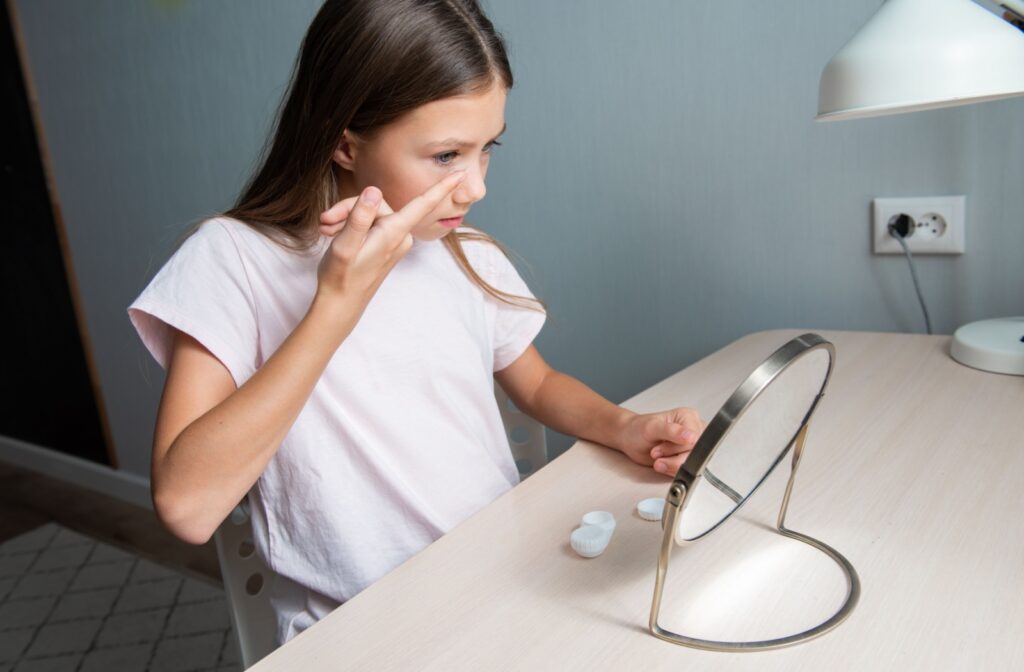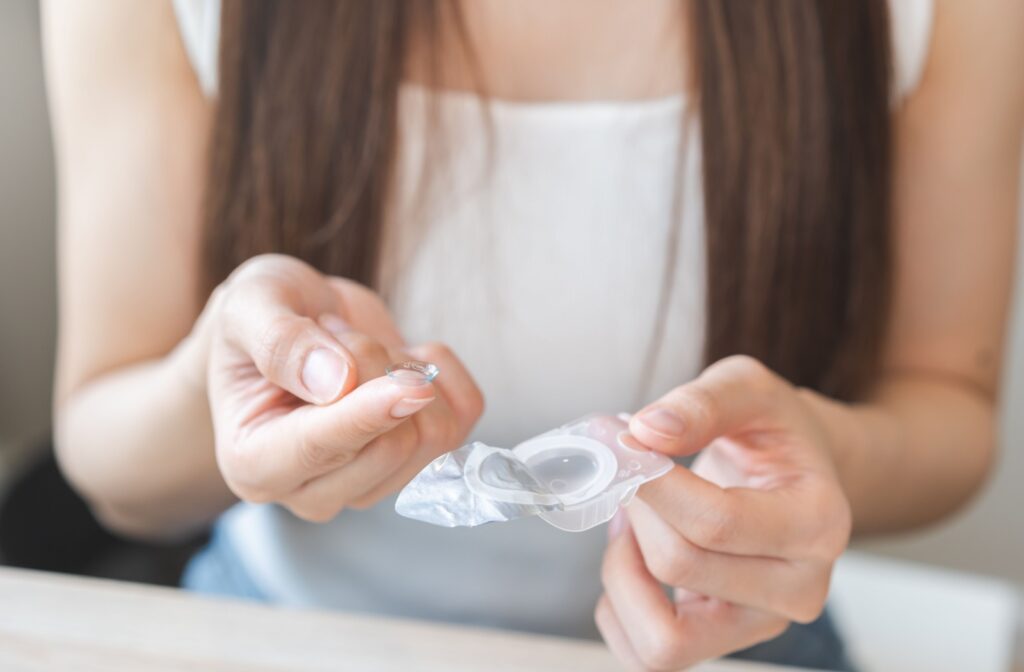Whether you’re curious about transitioning from glasses or thinking about contacts for your child or teen, there’s a lot to know about these popular vision-correcting devices. Contact lenses can be a game-changer for your vision and lifestyle, but they’re not always the right fit for everyone.
Many people are able to wear contact lenses, but some people, such as those with dry eye or frequent infections, aren’t suitable for contact lens wear. If you’re interested in contact lenses, contact your optometrist for a fitting or an eye exam.
All About Contact Lenses
Contact lenses are thin discs designed to sit directly on the eye’s surface. They’re used to correct refractive errors like nearsightedness and farsightedness. 45 million people in the United States wear contact lenses, enjoying the freedom they bring from traditional glasses.
Types of Contact Lenses
Contact lenses come in a variety of types. The two main categories are soft and hard contact lenses.
- Soft contact lenses are the most popular type of contact lens. They’re made from pliable plastic and feature good oxygen flow. Many people find them more comfortable to wear than hard contact lenses.
- Hard contact lenses are more durable, provide sharper vision, and can be less expensive. But they require a more rigorous sanitation procedure and many people find it takes longer to get used to them.
Wear Schedules
Contact lenses are also categorized by their wear schedules:
- Daily wear contact lenses are meant to be worn during the day and removed at night. You shouldn’t sleep in daily wear contact lenses, as doing so can put you at an increased risk of infection.
- Extended wear contact lenses can be worn overnight. However, your optometrist will make a recommendation on how long you should keep them on because eyes need occasional breaks. Extended wear contact lenses are associated with a higher risk of eye infections.
Replacement Schedules
Your contact lens replacement schedule refers to how often lenses need to be discarded and replaced.
- Daily disposable contact lenses are worn once and then disposed of at the end of the day.
- Planned replacement contact lenses can be reworn and their replacement schedule ranges from 7 to 30 days.
As you can see, contact lenses come in a variety of materials, wear schedules, and replacement schedules. Make sure you understand the procedure for your particular set of contact lenses. Wearing the same lenses for too long can be problematic.

Who Should & Shouldn’t Wear Contact Lenses
Many people can benefit from the conveniences and vision benefits of contact lenses. But like other medical devices, they’re not for everyone. Factors like the following may make someone unable to wear contact lenses:
- Serious allergies: Environmental allergens can adhere to contact lenses, and antihistamines used to relieve allergy symptoms can dry out the eyes. However, people with allergies may be able to wear daily disposable contact lenses.
- Dry eye: This condition refers to a problem with your tear film and can make contact lens wear uncomfortable. Contact lens wear isn’t impossible for those with dry eye, however. Talk to your optometrist about dry eye treatments, re-wetting drops, and contact lens options that are more suitable for your situation.
- Blepharitis: This is inflammation of the eyelid, and it should be treated before fitting contact lenses. Blepharitis can be treated with warm compresses, eyelash cleaning, and medications.
- Prolonged time in unsuitable environments: Places with lots of dust and debris, fumes, high heat, and chemicals can be hazardous for people with contact lenses because chemicals and debris can adhere to the lenses. If you work in such an environment, it’s best to wear glasses or wear safety glasses in addition to your contact lenses.
Other reasons contact lenses may be unsuitable for someone include having a complex or unusual prescription, keratoconus, frequent eye infections, or simply intolerable discomfort from wearing contacts.
Can Children & Teenagers Wear Contact Lenses?
Contact lenses are considered safe for children and teenagers. In fact, research suggests that children are at lower risk of eye infections than teenagers and adults. Eye care providers and parents should help young people learn how to properly take care of their contact lenses.
Some young people benefit from ortho-k contact lenses. These are worn overnight and reshape the cornea during sleep so that glasses or contact lenses are not required the following day. Ortho-k contact lenses can help slow down myopia progression.
Get a Contact Lens Fitting in San Diego
Ready for new contact lenses? Visit Total Vision Del Mar in San Diego for a contact lens fitting. During this appointment, an optometrist will measure your pupil and iris size, corneal curvature, and assess the health of your tear film. You’ll then receive sample contact lenses to try on. If these work for you, we’ll order your contact lenses and schedule follow-up appointments to check on how your eyes are adjusting.
As a partner of Total Vision, we have a wide range of products to choose from. We also offer comprehensive eye exams, a Total Myopia program, and eye disease management. Book an appointment with Total Vision Del Mar in San Diego today.



